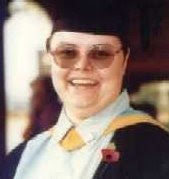The Lord of the Rings 50th anniversary
All that is gold does not glitter,
Not all those who wander are lost;
The old that is strong does not wither,
Deep roots are not reached by frost.
From the ashes a fire shall be woken,
A light from the shadows shall spring;
Renewed shall be blade that was broken,
The crownless again shall be king. (1)
For readers who are fans of Tolkien's The Lord of the Rings, today is a special day as it is the 50th anniversary of the publication of the first part of the half a million page novel. (Note it is NOT a trilogy. It was published in 3 parts at the insistence of the publishers, Allen & Unwin, in part because of post-war time paper shortages, but also because the publishers were uncertain how well it would sell.) It is the sequel to The Hobbit, which came out in 1937. Tolkien wrote The Hobbit for his own amusement and didn't expect it to sell well, but it did, in part because his friend and fellow Inkling, C. S. Lewis, reviewed it so well. As a consequence A & U asked for a sequel, but Tolkien was short of ideas, having used them all up in The Hobbit, as he told his publishers.
Tolkien spent the next 17 years working on The Lord of the Rings, in between (and sometimes instead of) his scholarly work (he was a Professor at Oxford University). He was distracted from completing what would become The Lord of the Rings, however, by his desire to work on his Elvish languages and the history of Middle-earth that would eventually be published posthumously as The Silmarillion. Finally, in the autumn of 1949, he finished The Lord of the Rings, but there were further delays because Tolkien wanted Allen & Unwin to publish both The Lord of the Rings and The Silmarillion together, but the reader's report for the latter was not promising, and A & U rejected the offer. So Tolkien offered both to Collins, but they were reluctant too, so it went to A & U after all, and on July 19 1954, The Fellowship of the Ring appeared. The first printing was just 3,500 copies, but the book turned out to be so popular that it went into a second printing after only six weeks. The second part, The Two Towers, came out in November 1954 and the final part, The Return of the King came out in October 1955, after various delays part of which were caused by Tolkien trying to sort out the Appendices he had promised to his readers. Today more than 30 million copies of The Lord of the Rings have been sold worldwide.
(1) The Fellowship of the Rings, (c)HarperCollins, 1954, 1991
[Addendum: It has come to my attention that the first part of The Fellowship of the Rings was published on July 29, 1954, not July 19 as I was told. Apologies for the misinformation.]


2 comments:
Good to visit your blog and to enjoy the specifics/corrections around the LOTR beginnings. I had no idea!
Cheers,
Teddy
Thanks Teddy ! Yes, ever the pedant (perhaps I should have called my Blog, "Pedant's Blog" ?), I get riled when people refer to it as a trilogy. You can tell it's not a trilogy by the simple fact that the story continues exactly where it left off in the previous part. In trilogies (or longer series), the author gives you some sort of recap of previous events or explanation of who are the characters. The Lord of the Rings never does this.
Post a Comment